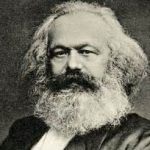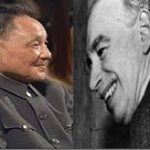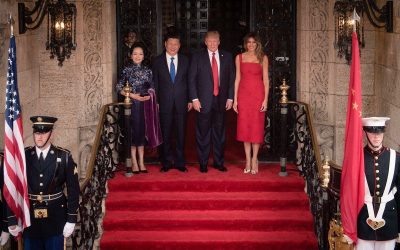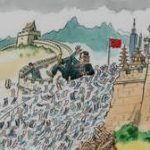China’s economic performance after the beginning of its 1978 reforms simply exceeded the experience of any other country in human history. To give only a partial list:
• China achieved the most rapid growth in a major economy in world history.
• China experienced the fastest growth of living standards of any major economy.
• China lifted 620 million people out of internationally defined poverty.
• Measured in internationally comparable prices, adjusted for inflation, the greatest increase in economic output in a single year in any country outside China was the U.S. in 1999, when it added US$567 billion, whereas in 2010 China added US$1,126 billion – twice as much.
• During the beginning of China’s rapid growth, 22 percent of the world’s population was within its borders – seven times that of United States at the beginning of its own fast economic development.
Wholly implausibly, it is sometimes argued that this success was merely due to “pragmatism” and achieved without overall economic theories, concepts, or a leadership really understanding the subject (particularly with no knowledge of U.S. academic economics!). If true, then the study of economics should immediately be abandoned – if the greatest economic success in world history can be achieved without any understanding of the subject, then it is evidently of no practical value whatever.
In reality this argument is entirely specious. Deng Xiaoping’s approach to economic policy was certainly highly practical regarding application – the famous “it doesn’t matter if a cat is black or white provided it catches mice.” But it was extremely theoretical regarding foundations – as shown clearly in such works as In Everything We Do We Must Proceed from the Realities of the Primary Stage of Socialism, We Are Undertaking An Entirely New Endeavour, and Adhere to the Principle to Each According to his Work. Deng Xiaoping’s outstanding practical success was guided by a clearly defined theoretical underpinning, which can be understood particularly clearly in its historical context and in comparison with Western and other economists.
As is generally known, after 1949 the newly created People’s Republic of China constructed an economy, fundamental elements of which were drawn from the Soviet Union. It is important to understand that there was nothing irrational in this – the USSR, up to that time, had the world’s most rapidly growing economy.
Indeed, the immediate post-1929 success of the USSR was of extraordinary dimensions. During 1929-39 the USSR achieved 6 percent annual GDP growth, which until then was by far the fastest ever achieved by a major economy, and almost twice the historical growth rate of the United States. Despite colossal destruction in World War II, by 1949 the USSR had already regained its prewar production level.
The elements which produced such historically unprecedented economic growth were clear. From 1929, Stalin, with the First Five Year Plan, launched the USSR on an economic policy never previously attempted in any country – construction of a national basically self-enclosed administered economy. Resources were not allocated by price but by material quantities – a steel factory did not buy iron ore on the market but had it allocated by administrative decision. Foreign trade was minimized. State ownership was applied even to small scale private enterprises such as restaurants. Farmers’ small holdings were eliminated and agriculture organized into large scale collective farms.
Despite verbal claims that this policy was “Marxist,” Stalin’s economic structure was in fact radically at variance with that of Marx himself. To use the Marxist terminology common to both China and the USSR, Soviet economic policy in 1929, in a single step, replaced economic regulation by prices (exchange value) by allocation by material use (use value).
Marx had written a socialist state would: “wrest, by degree, all capital from the bourgeoisie, to centralize all instruments of production in the hands of the state… and to increase the total productive forces as rapidly as possible.” In writing “by degree” Marx clearly envisaged a period during which state owned and private property would both exist. Instead, in the USSR in 1929 essentially all property was taken into the state sector.
The very word “socialism” is derived from “socialized” (i.e. large scale) production – not small scale peasant output. However in the USSR, after 1929, even small scale peasant plots were taken into state ownership – prior to their administrative elimination. However, simultaneously with suppression of small scale private output, the advantages of very large scale production were eliminated by the nationally self-enclosed character of the USSR’s economy – a U.S. aircraft manufacturer like Boeing sold into the world market, but a Soviet manufacturer such as Ilyushin could produce aircraft only for the far smaller Soviet economy.
Soviet economists who pointed out these issues were executed by Stalin for doing so, but in any case such criticism appeared “theoretical quibbles” compared to proven Soviet economic success.
After 1945 this dynamic changed. In 1929 the global economy had been collapsing into “autarchic” states or empires. The United States, the British Empire, Japan and Nazi Germany, were cut off from each other by tariff walls. The international monetary system, the Gold Standard, collapsed without replacement. Amid such global economic chaos, the autarchic socialist USSR far outperformed autarchic capitalist economies.
But following World War II, the integrated world economy was gradually rebuilt. A new international payments system, the dollar standard, was created. Tariffs were reduced. The Soviet economy was small compared to this new world economy, and could not be integrated into it without relaxation of its planning system – as global economic fluctuations could not be planned for. Collectivized Soviet agriculture was unproductive and the USSR’s consumer goods of low quality, due to Stalin’s insistence on overwhelming priority to heavy industry – in Stalin’s words: “What does a fast rate of development of industry involve? It involves the maximum capital investment in industry.” By the 1970s Soviet economic growth, while more rapid than the United States, was far slower than Japan or South Korea – which were selling into the world market.
But, if the USSR’s economy was heading to crisis, the free market system, its only existing alternative, was by the 1970s showing its own difficulties. After the 1973 “oil price crisis,” most developed capitalist economies decelerated dramatically. The United States both slowed and from the early 1980s began the huge debt accumulation which eventually culminated in the 2008 international financial crisis. When the free market model was applied to the former USSR, from 1992 onwards, it led to the greatest economic collapse in a major economy in peacetime in history – Russia’s GDP fell by 30 percent.
Confronted with decisive problems in both dominant economic models, instead of remaining trapped within one or the other, Deng Xiaoping embarked on a policy never previously seen – creation of what is now referred to in China as a “socialist market economy.”
In one sense, Deng Xiaoping went from the USSR’s post-1929 model “back to Marx.” Underlying Deng Xiaoping’s analysis from 1978, frequently in its literal wording, was Marx’s famous “Critique of the Gotha Programme” – his most extensive commentary on the construction of a socialist society.
To see this close relation here for example is Marx’s analysis: “What we are dealing with… is a communist society, not as it has developed on its own foundations, but… just as it emerges from capitalist society.” For a person in such a society: “The same amount of labor which he has given to society in one form, he receives back in another.” But: “In a higher phase of communist society… after the productive forces have also increased… society inscribe on its banners: From each according to his abilities, to each according to his needs!”
Deng Xiaoping’s own post-1978 formulation is almost word for word Marx’s: “A Communist society is one in which… there is great material abundance, and the principle of from each according to their ability, to each according to his needs, is applied. It is impossible to apply that principle without overwhelming material wealth. But in the present period in China, before the accumulation of such wealth, the principle was to each according to their labor/work: ‘We must adhere to this socialist principle which calls for distribution according to the quantity and quality of an individual’s work.” Deng’s fundamental characterization was: “China is in the primary stage of socialism. Socialism itself is the first stage of communism, and here in China we are still in the primary stage of socialism – that is, the underdeveloped stage. In everything we do we must proceed from this reality, and all planning must be consistent with it.”
But while in one sense Deng Xiaoping “returned to Marx,” he necessarily had to resolve many problems of a modern economy Marx never envisaged. Purely theoretically, a number of these had been analyzed by Keynes in the 1930s. Keynes’ fundamental conclusion was that investment played the determining role in the economy, “the fluctuations of output… depend almost entirely on the amount of current investment” (Keynes conclusion has since been comprehensively confirmed by statistics). As, in a modern economy, investment is financed by borrowing, Keynes advocated very low interest rates to incentivize investment.
But Keynes judged these alone would be insufficient to stably maintain an adequate investment level. It was therefore necessary for the state to play a direct role in setting the level of investment: “I am… skeptical of the success of a merely monetary policy directed towards influencing the rate of interest… I expect to see the state… taking an ever greater responsibility for directly organizing investment.” Keynes noted: “I conclude that the duty of ordering the current volume of investment cannot safely be left in private hands.”
But if the “the current volume of investment” were to be set, Keynes realized this meant a large state investment role: “I conceive… that a somewhat comprehensive socialization of investment will prove the only means of securing an approximation to full employment.”
Keynes noted such a “somewhat comprehensive socialization of investment” did not mean eliminating the private sector, but socialized state investment operating together with a private sector: “This need not exclude all manner of compromises and devices by which public authority will co-operate with private initiative… The central controls necessary to ensure full employment will, of course, involve a large extension of the traditional functions of government.” Keynes, consequently, envisaged an economy in which a private sector existed but in which the state sector was sufficiently dominant to set overall investment levels.
But Keynes’ analysis remained purely theoretical. It could not be implemented in the West for an insurmountable reason – which is why the West’s “Keynesianism” bears little relation to Keynes’ own writings! Capital investment is “the means of production.” If the most basic investment decisions were not taken by private capital, it would no longer be a capitalist society. Keynes had developed an incisive theoretical analysis, but which could not be implemented in the society in which he lived.
Problems which were insurmountable for Keynes were, however, no problem for Deng Xiaoping – as he did not intend to create a capitalist society! To be clear, there is no evidence Deng Xiaoping’s economic concepts were directly influenced by Keynes. But ideas Deng Xiaoping was entirely familiar with from Marx led to the same economic structure as Keynes. The state would retain ownership of large scale (i.e. socialized) economic sectors, thereby giving it the ability to regulate the investment level, while smaller scale economic sectors (non-socialized production) could be released to the private or non-state sector. The state therefore did not need to own the overall economy, just to own enough to set the overall investment level.
This is evidently the policy applied in China from 1978 by the replacement of the rural People’s Communes created in the 1950s (collectivized agriculture) with small scale based farming (the “household responsibility system”). Then the policy known as Zhuada Fangxiao (“keep the large, let go the small”) could be embarked on – maintaining large state firms within the state sector and releasing small ones to the non-state/private sector.
Therefore, although a vibrant private sector was created, the state sector was still large enough to set the overall investment level – i.e. the state sector remained dominant. As the Wall Street Journal summarized: “Most economies can pull two levers to bolster growth – fiscal and monetary. China has a third option … accelerate the flow of investment projects.” An economic structure envisaged only in theory by Keynes was realized in practice by Deng Xiaoping.
Deng Xiaoping’s economic structure simultaneously solved the problem of diverting resources from heavy industry and creating an abundant supply of consumer products. As the state owned heavy industry, prices in this sector could be controlled, while simultaneously those in agriculture and light consumer industry were liberalized. Relative prices therefore rose in agriculture and consumer industries, resources flowed into these sectors and their output soared. Simultaneously the urban population was protected against initial negative pressures on living standards by these price rises by subsidies financed by reducing China’s armaments expenditure. The extraordinarily rapid growth this structure produced created large scale savings which, in a virtuous circle, could then finance the building of heavy industry on a new basis.
Simultaneously with reintroducing small scale “non-socialized” production, China’s economy pursued international “opening up,” allowing it to participate in the largest scale production of all – for the global market.
Therefore, far from Deng Xiaoping’s economic policies being purely pragmatic, they flowed in an integrated fashion from underlying theoretical principles through to the solving of eminently practical issues. It was this which produced by far the greatest economic growth and social advancement seen in any country in world history.
This integrated character of Deng Xiaoping’s economic system also explains why any diversion from it necessarily leads to economic problems. Any return to an administered economy leads to inability to take advantage of small-scale production and to integrate with, and take advantage of, a world economic market.
Any system in which private enterprise is dominant loses the ability of the state to set the investment level, and thereby recreates the crises which both Keynes and Deng Xiaoping had successfully solved how to tackle. In short, no other figure in history has ever combined such deep economic thinking with such practically successful economic policy as Deng Xiaoping.
Deng Xiaoping was above all a great leader of the Chinese people. Through pursuit of his country’s national revival, lifting over 620 million people out of poverty, he also made an unparalleled contribution to humanity’s overall well-being.
But if that were not enough, Deng Xiaoping had another achievement. By far the greatest economist of the 20th century was not Keynes, Hayek or Friedman but Deng Xiaoping.






